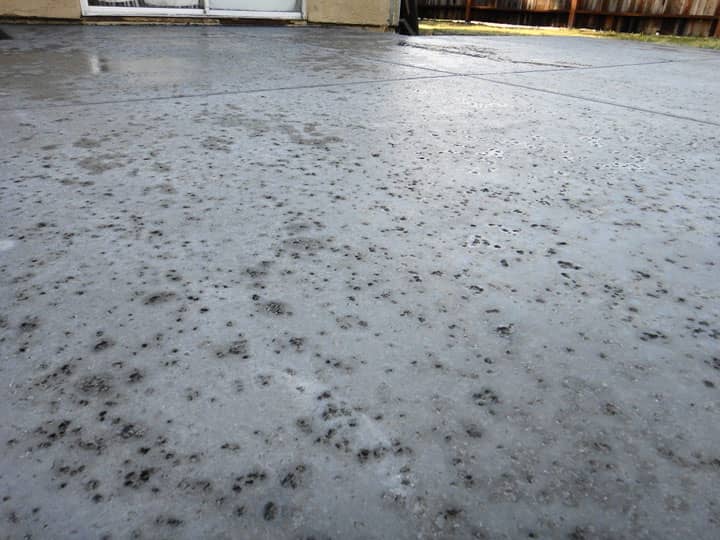Salt Finish Concrete Surface is used in pavements, driveways and courtyards, creating a subtly rough texture to plain concrete. It effectively offers great skid resistance that lasts a very long time. It is also aesthetically more pleasant than simple or colored concrete, or broom finish concrete.
Coarse rock salt crystals are spread over the soft concrete and then inserted by using a roller on them. Afterwards, when the concrete is set, it is washed with clean water. This ensures good skid resistance and a nice subtle texture.

Let us now see the steps to make salt finish concrete surface.
The subgrade has to be prepared properly if you want to have a good salt finish concrete surface. This helps you achieve uniform slab thickness, provide necessary support for the loads on the surface, and prevent cracks in the concrete.
Provide a framework on both sides of the path to hold the concrete in one place. If the area is too large, you may want to use multiple frameworks. This should be at the same depth as the concrete. This will not only keep the soft concrete in place but also give it any 2D shape you desire.
Also, if vehicles will roll over these slabs, use reinforcements. They can be in the form of wire mesh or grid. This will increase the structural load bearing capacity of the concrete.
Pour the concrete mix on the reinforcements (if necessary) within the confinements of the framework. Make sure you use proper thickness of the concrete, as this greatly determines the structural strength.
You might want to lay the concrete thicker on the edges to prevent the edges from cracking in.
Give the concrete a smooth finish as this is mandatory to get a salt finish. Take care to keep it even. Use screeds to scrape off excess concrete. Make sure there is no bleeding water. Finish it with a bull float to achieve maximum finesse.
This is the most important step in the whole procedure. Let the concrete dry out a little bit, enough to hold roller weight. Also, it should not be sticky anymore.
When it's ready, begin pouring the salt crystals over the concrete. Take great care to scatter them evenly. Generally you can apply around 6-7 pounds of salt per 100 square feet.
Then, use a roller or trawl to push the crystals into the cement. Don't make it perfectly smooth, the surface needs to have a texture. Let dry for 24 hours to settle.
The salt crystals do not dissolve due to the low water presence in the concrete. Once settled, they remain there. After a day or two, remove the excess salt that did not get in the cement using a hard broom.
Then rinse the surface thoroughly with clean water. This dissolves the salt, leaving irregular sized dimples where the salt crystals have been. This is the salt finish texture of concrete.
To make the changes permanent, you need to apply the sealant. First make sure the surface is entirely clean of any debris or dust. Then use the roller to apply an even layer of sealant.
After a couple of hours, apply another coat. The milky sealant will dry into clear and glossy finish.
TAG: How-to's ~ Ideas